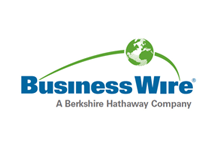1,3-Butylene Glycol Market by Product, Application and Geography - Market Size, Share, Development, Growth and Demand Forecast (2013-2024) - ResearchAndMarkets.com
The "1,3-Butylene Glycol Market by Product, by Application, by Geography - Global Market Size, Share, Development, Growth and Demand Forecast, 2013-2024" report has been added to ResearchAndMarkets.com's offering.
The global 1,3-butylene glycol (1,3-BG) market is likely to grow from $127.8 million in 2017 to $178.5 million by 2024.
Growing cosmetic products market and the growing demand of 1,3 butylene glycol in the pharmaceutical industry are the key factors driving the growth of the global market. 1,3-BG is used as raw material for polyester plasticizers and unsaturated polyester resins humectant in cosmetics.
The chemical is a viscosity decreasing component and prevents the dying out of cosmetics. The best characteristic of 1,3-BG is its ability to stabilize volatile compounds such as fragrances and flavors fixing them in cosmetic formulations and to reduce the loss of aroma. It also helps in the preservation of cosmetics against spoilage by micro-organisms.
Firstly, it has a very good distribution coefficient, which leads to a better efficacy of preservatives mixed into formulation, thus making it possible to lower the dose of the applied preservative. Secondly, it has an antimicrobial effect, which helps arrest the growth of microorganisms in products. Compared with glycerol, sorbitol, and propylene glycol, 1,3-BG is the most efficient polyol as antimicrobial agent.
As per the findings of research, pharmaceutical grade occupied the larger share of the market, its usage in major industries, such as cosmetic, personal care, and food industries. Growing demand for skin care and hair care products and entry of large number of players in the food and beverages industry worldwide, is driving the demand for pharmaceutical grade 1,3-butylene glycol.
On the basis of application, cosmetics & personal care products were the largest application area of 1,3-butylene glycol, owing to increasing consciousness and awareness towards haircare and skincare among consumers. The increasing awareness supported with increased disposable income is leading to more demand of such cosmetic products, which finds application of 1,3-BG.
Globally, Asia-Pacific dominates the market and is expected to remain the largest market in future as well. This is due to high demand for 1,3-BG in emerging economies of the region. During the forecast period, the market is expected to witness the fastest growth in Asia-Pacific, attributed to factors such as improving healthcare infrastructure, increasing disposable income, and significant growth in the cosmetics industry.
Countries such as India and China have growth potential for 1,3-butylene glycol market in the region. The healthcare expenditure in these countries is still proportionally very low when compared to the developed economies of Europe and North America. However, the large population base and increasing disposable income exhibit strong demand for personal care products, thus increasing the demand for 1,3-butylene glycol.
1,3 butylene glycol is used as raw material for polyester plasticizers and unsaturated polyester resins humectant in cosmetics. The chemical is a viscosity decreasing component and prevents the dying out of cosmetics. The best characteristic of 1,3 butylene glycol is its ability to stabilize volatile compounds such as fragrances and flavors fixing them in cosmetic formulations and to reduce the loss of aroma. 1,3-BG also helps in the preservation of cosmetics against spoilage by micro-organisms.
Firstly, it has a very good distribution coefficient, which leads to a better efficacy of preservatives mixed into formulation, thus making it possible to lower the dose of the applied preservative. Secondly, it has an antimicrobial effect, which helps arrest the growth of microorganisms in products.
Compared with glycerol, sorbitol, and propylene glycol, 1,3 butylene glycol is the most efficient polyol as antimicrobial agent. The market for beauty products is driven by increasing aging population, and increasing disposable income. The leading cosmetic companies, such as L'Oreal Group (France), Avon Products Inc. (the U.S.), The Estee Lauder Companies Inc. (the U.S.), and Oriflame Cosmetics (Luxembourg) are continuously introducing new variants, which is leading to increased growth of cosmetics industry. This is expected to drive the growth in demand of 1,3-butylene glycol worldwide.
The research states that this industry is consolidated, where OXEA GmbH, Daicel Corporation, and KH Neochem Co., Ltd. are the market leaders. Some of the other key players in the 1,3-butylene glycol market are Godavari Biorefineries Ltd., Haihang Industry Co., Ltd., and Genomatica, Inc.
Market Dynamics
Trends
- Quest to Develop Cost Effective Fermentation Process to Produce 1,3-butylene Glycol
Drivers
- Growing Cosmetic Products Market
- Growing Demand for 1,3-butylene Glycol in Pharmaceutical Industry
Restraints
- Uncertain Global Economic Conditions
Opportunity
- Increasing Consciousness & Awareness Toward Haircare & Skincare
Companies Profiled
- Daicel Corporation
- KH Neochem Co. Ltd.
- Genomatica Inc.
- Godavari Biorefineries Ltd.
- OXEA GmbH
- Haihang Industry Co. Ltd.
For more information about this report visit https://www.researchandmarkets.com/research/847mgz/13butylene?w=4
View source version on businesswire.com: https://www.businesswire.com/news/home/20190227005457/en/



